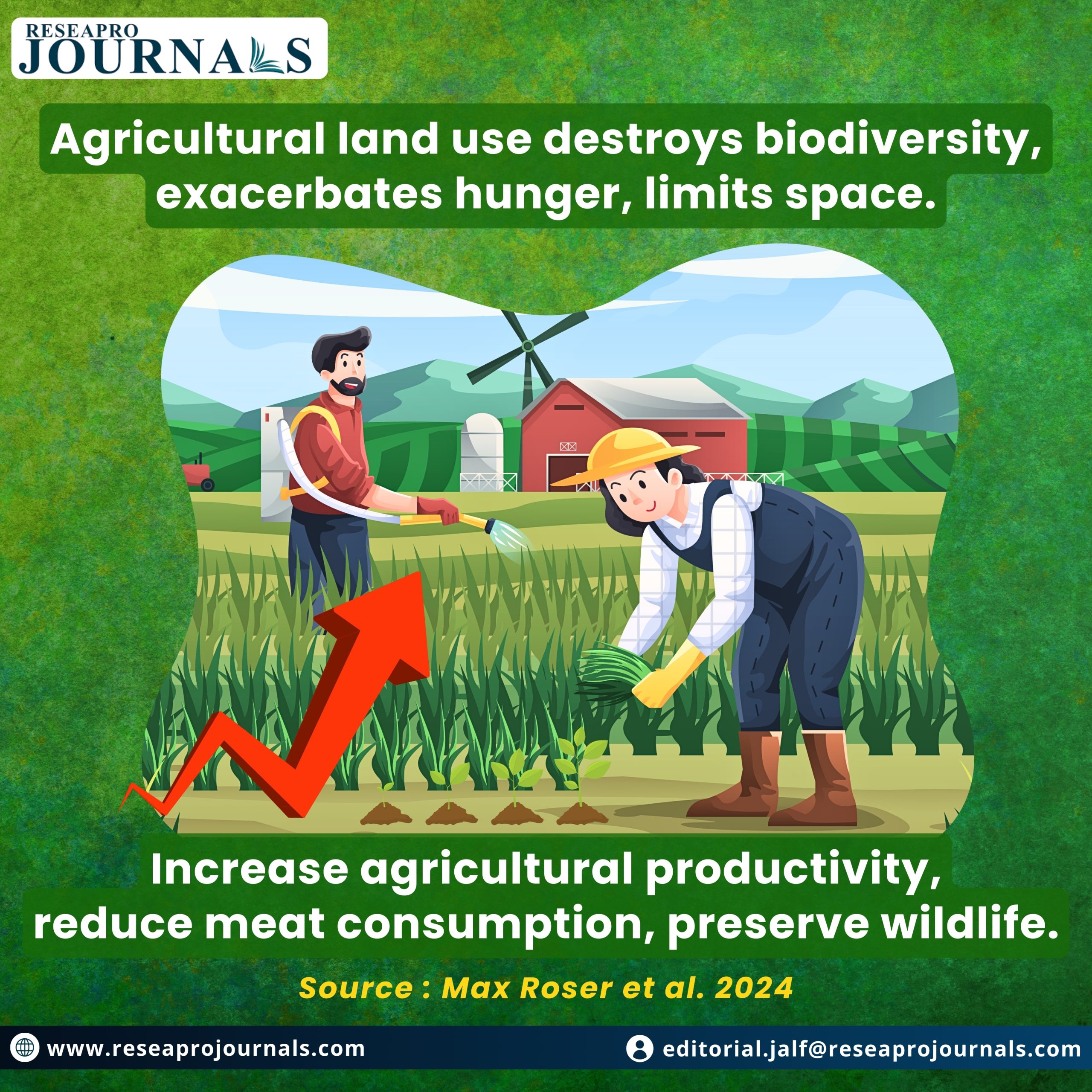
In our ongoing quest to address global challenges, the imperative to enhance agricultural productivity stands out as a crucial dual-purpose strategy that tackles both global hunger and wildlife conservation. The extensive conversion of wilderness into agricultural land has been identified as a significant driver of biodiversity loss. This article explores why improving agricultural efficiency is pivotal to reversing these trends and fostering a sustainable future.

Historically, expanding agricultural lands was the only method to increase food production. This approach, however, has had detrimental effects on the planet’s biodiversity. Today, about 48 million square kilometers of land — approximately five times the size of the United States — are utilized for agriculture. This land was once covered by wilderness and is now the front line in the battle to protect the world’s remaining wildlife.
The transformative potential of modern agriculture allows us to produce more food on less land. Over the past 60 years, significant strides have been made in increasing crop yields. For instance, wheat production has seen a 3.5-fold increase per hectare, which means we can grow more without expanding into new areas. This efficiency gain is critical in reducing the pressure on natural habitats and is central to efforts aimed at restoring and conserving biodiversity.
However, realizing these gains on a global scale involves overcoming several challenges. Yield gaps — the difference between current crop yields and those achievable under optimal conditions — vary widely across regions. Bridging these gaps requires adopting advanced agricultural technologies, improving access to finance, ensuring fair trade, and securing land rights for farmers. Addressing these issues is essential for sustainable intensification of crop production.
Moreover, a significant reduction in global meat consumption can dramatically reduce the land needed for agriculture. Currently, 77% of agricultural land is devoted to livestock, which is highly inefficient in terms of land use for protein and calorie generation. By shifting dietary patterns towards plant-based diets, we could decrease the agricultural footprint by up to 75%, allowing vast areas to revert to natural habitats.
The path forward involves not just technological innovation but also changes in consumption patterns and reducing food waste. With the global food demand expected to rise by up to 56% by the middle of this century, boosting agricultural productivity is more than a necessity; it is an imperative for a food-secure and environmentally sustainable world.
By increasing the efficiency of agricultural practices, humanity can feed a growing population while also making room for nature to thrive. This dual achievement could herald a new era where ending hunger and conserving wildlife go hand in hand, securing a resilient and biodiverse planet for future generations.
